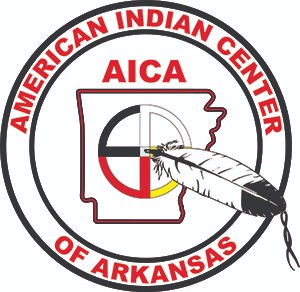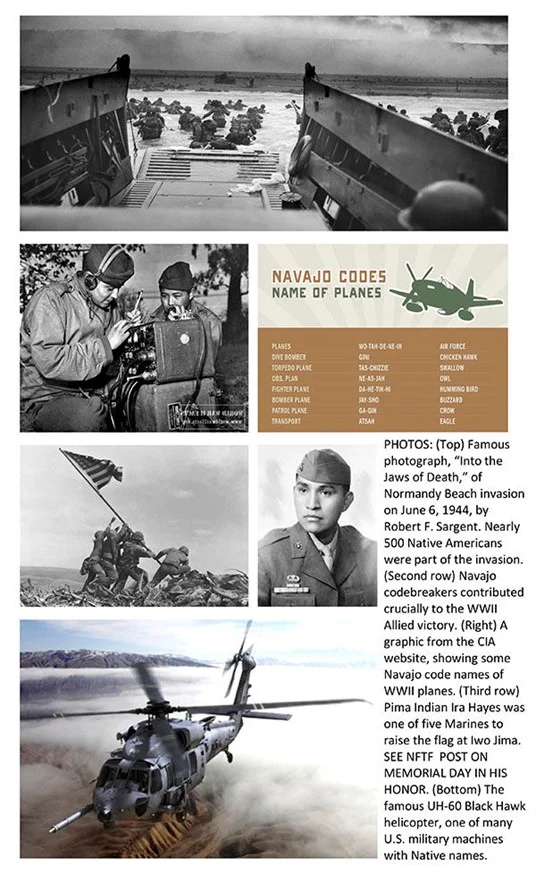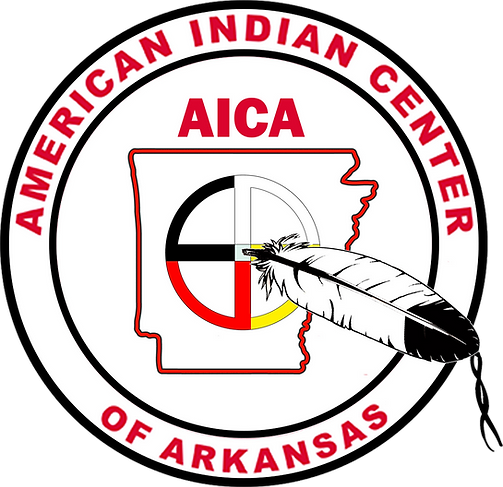Honoring all those who gave their lives for us this Memorial Day and every day.
Native Americans have been decorated more for bravery per capita by the U.S. military than any other ethnicity
Yesterday was the 75th anniversary of D-Day. On THIS day 75 years ago, June 7, 1944, more than 4,500 Allied troops, 2,000 of them American, were dead on the beaches of France. (Nine thousand would eventually be buried there.) They knew that the fate of the entire world depended on their bravery. Bless them. And here is a little known fact: nearly 500 Native American soldiers fought on Omaha and Utah Beach. (Some didn’t even have the right to vote at home!)
The fate of the world also depended on a small group of Native Americans credited with helping turn the tide for the Allies: The Code-Breakers. In WWII, many were Navaho, but some were Lakota, Meskwaki, Mohawk, Comanche, and Tlingit. And here’s a little known fact: the military employed 10,000 WOMEN codebreakers! Another little-known fact: WWII wasn’t the first time the U.S. military used Native codebreakers. Cherokee, Choctaw, and Comanche code-talkers were first employed in WWI.
Partly because of their native language skills (which, ironically, the U.S. government had tried to crush for more than 80 years!), they were uniquely adept at breaking German and Japanese codes for strategic operations. The Code Talkers’ contribution to the war efforts simply cannot be overstated.
Native American contributions to the U.S military have long been heralded. According to military statistics, Native Americans have served in the military more per capita than any other ethnic group. (Wanna guess who’s a close second? African-Americans. Hispanic participation is also extremely high and growing.) Native Americans also have been decorated more for bravery (per capita) by the U.S. military than any other ethnic group: 25 Native Americans have received the Medal of Honor for heroism.
The warrior culture of some native tribes has long been celebrated in American popular culture. Bravery in battle was at a high premium in many tribes and was a main factor in male and chieftain status. (Modern research, as well as tribal oral histories, are revealing that Native WOMEN also served fiercely as warriors and as chiefs in the past. More on this in a later post. And record numbers of Native women join the armed forces today.)
The military has long recognized Native American contributions. In fact, Native American Eli Parker, reached general’s rank and was the personal aide to General Ulysses S. Grant in the 1860s!
After World War II, the military named the first cruise missile in honor of the Navaho Code-Breakers: the SM-64 Navaho experimental cruise missile. That was the first of many war machines to be named after native tribes.
The military has a very complicated procedure to select Native American names for their military machines. First, the Bureau of Indian Affairs maintains a list of names the military can use, based on recommendations from tribal counsels. The Army Material Command chooses five names from that list, based on the characteristics of the helicopter, plane or other war machine. The name must promote dignity and inspire an aggressive spirit. Finally, the names are vetted through the United States Patent Office. (This brief list is only part of the bureaucratic process.)
Here’s an official list of U.S. military machines with Native American names:
AIRCRAFT & MISSILES IN SERVICE:
· AH-64 Apache attack helicopter
· UH-60 Black Hawk utility helicopter
· UH-72 Lakota utility helicopter
· CH-47 Chinook heavy-lift transport helicopter
· OH-58 Kiowa observation helicopter
· OH-6 Cayuse observation helicopter
· TH-67 Creek trainer helicopter
· C-12 Huron transport aircraft
· RU-21 Ute electronic intelligence aircraft, C-12 variant
· BGM-109 Tomahawk cruise missile
RETIRED AIRCRAFT:
· UH-1 Iroquois utility helicopter, retired in 2011
· H-34 Choctaw transport helicopter, early 1970s
· RU-8 Seminole utility aircraft, 1992
· H-21 Shawnee transport helicopter, 1967
· OV-1 Mohawk twin-engine observation aircraft, 1996
· T-41 Mescalero trainer aircraft, only for the Air Force
PROPOSED BUT NEVER FIELDED:
· SM-64 Navaho experimental cruise missile, canceled 1957
· AH-56 Cheyenne attack helicopter, abandoned 1972
· RAH-66 Comanche attack helicopter, 2004
· ARH-70 Arapaho armed reconnaissance helicopter, 2008
“The Native American Military Tradition” was originally posted June 7, 2019 on Facebook and NotesfromtheFrontier.com
103,776 views / 2,732 likes


